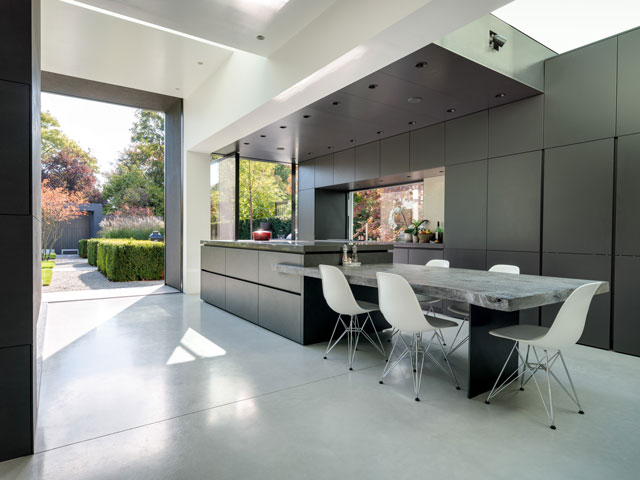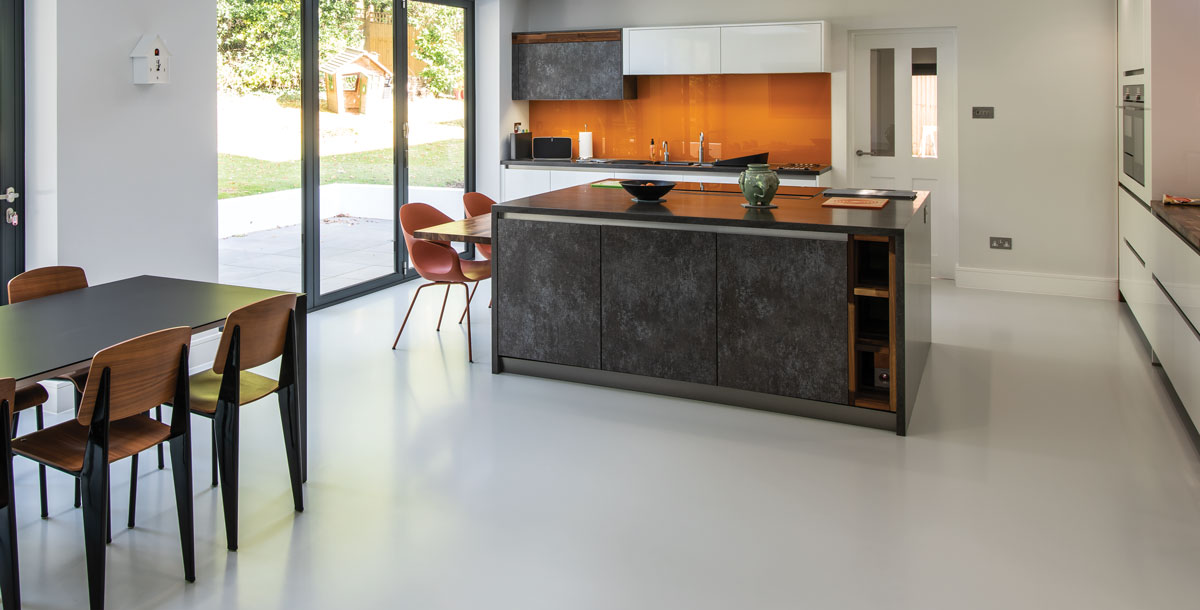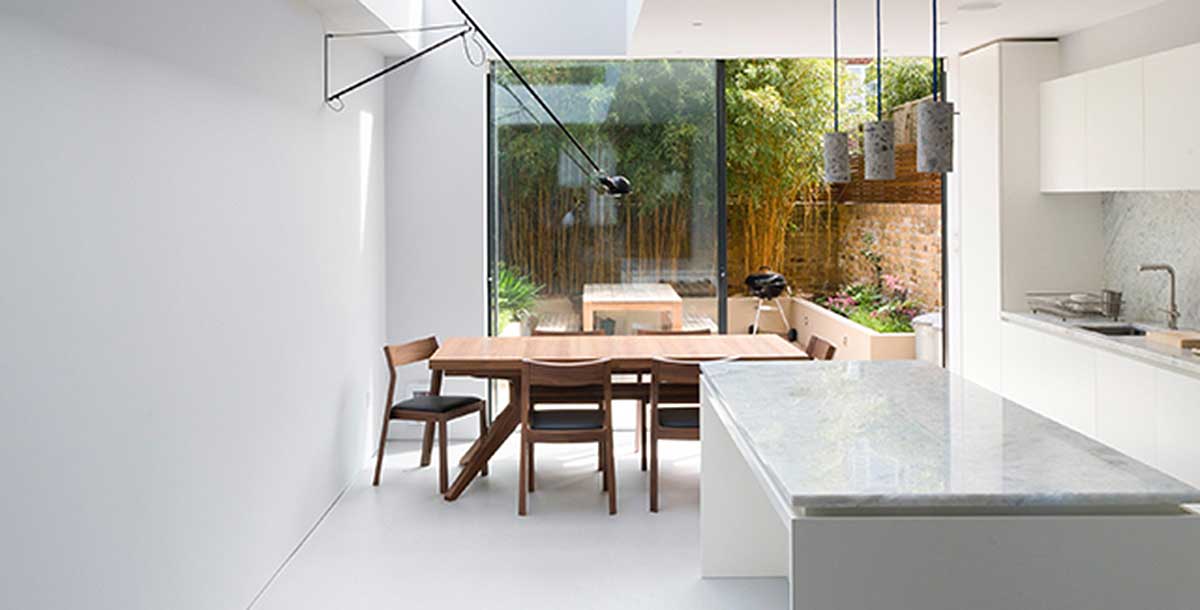Concrete and resin floors: the pros and cons
An at-a-glance guide to the benefits and drawbacks of these these two floor options
Concrete and resin floors are sleek choices for contemporary interiors. Alex Dennis, owner and CEO of Sphere 8 offers his expert advice on the advantages and disadvantages of both.

Off-white concrete floor by Lazenby. Project by Robert Dye architects
Affordability
Concrete and resin floors costs from around £250 to £450 per square metre. Resin tends to be at the higher price point. They may not be the most affordable options but both make a contemporary design statement.
Fuss-free design
This type of flooring offers a completely seamless finish that is ideal for fitting to new builds or extensive renovation projects. There is some disruption when the flooring is laid. So, it’s not something to consider if you need to use the space immediately. Neither have grout lines or gaps for dirt to collect in. So, they are very easy to keep clean.
Long-lasting
Resin will last around 25 years if cared for properly and this is a similar time-frame for concrete. But both resin and cement will need to be sealed to keep it from any surface damage. Resin formulas based on a plant-oil biopolymer from the castor bean are resistant to cracking and yellowing. It shouldn’t suffer from mould or shrinkage.










